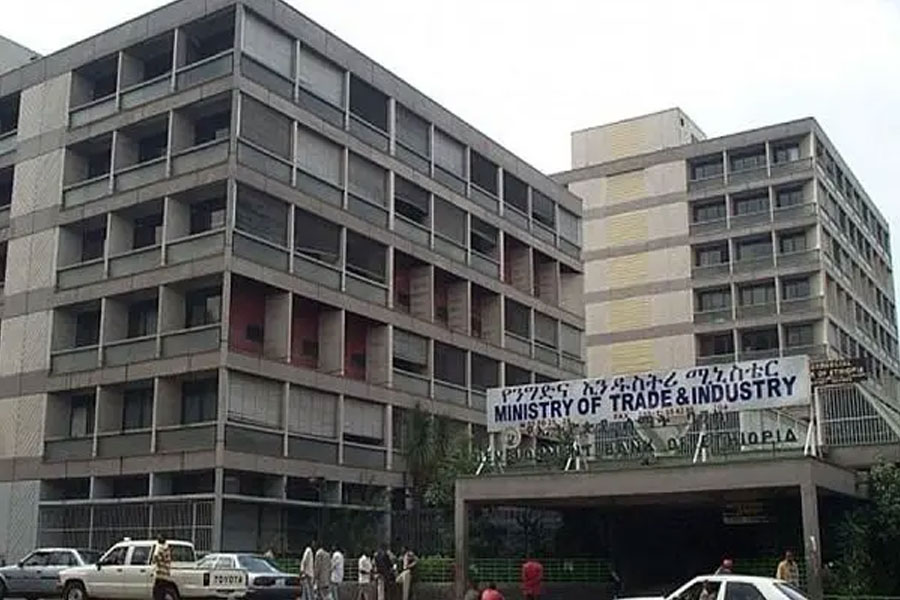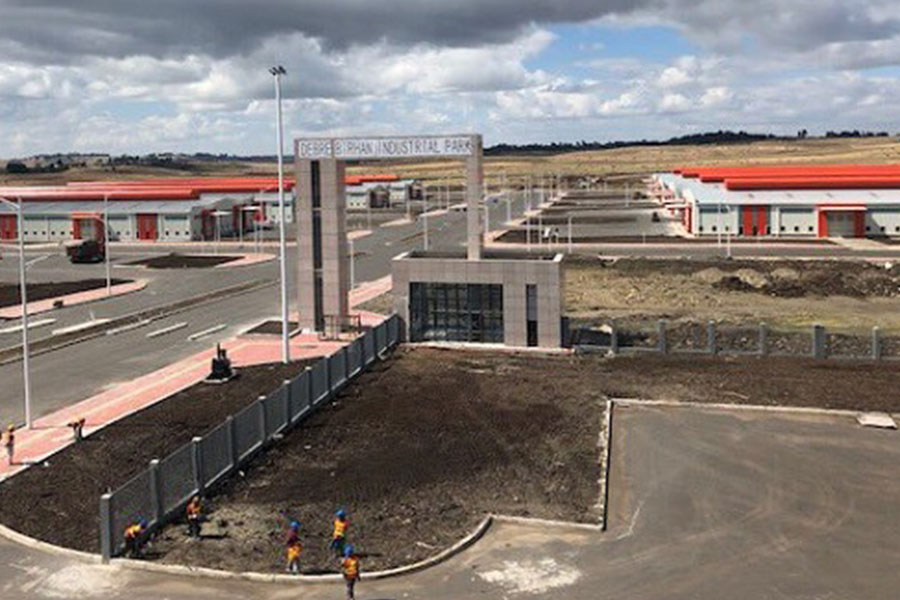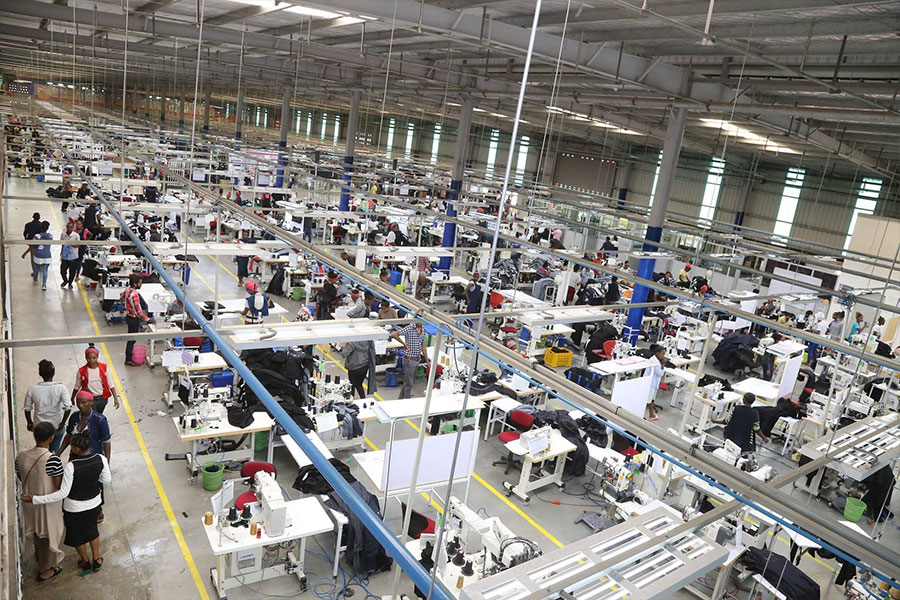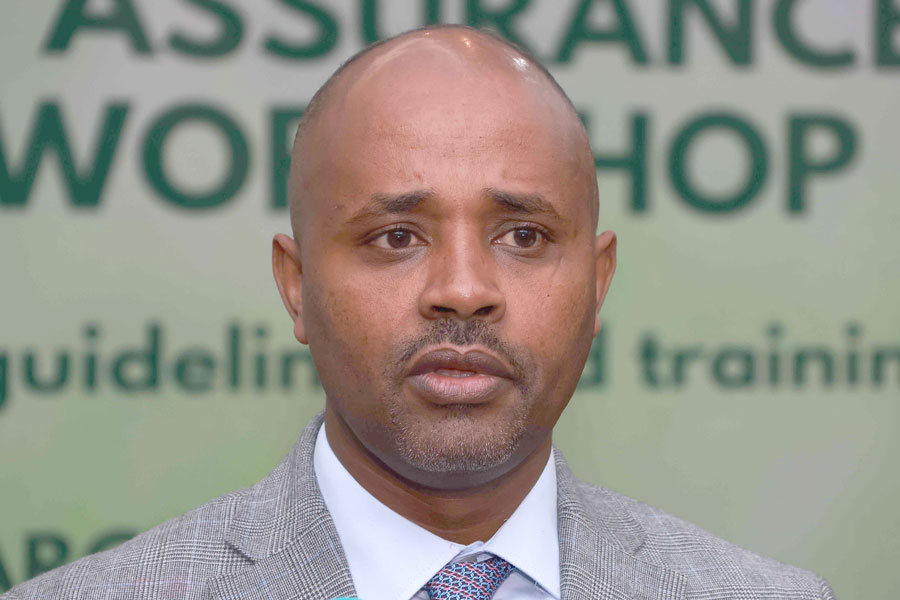
Fortune News | Jan 02,2021
The government has chosen five new places as major sites for industrial development in the coming two decades after only recently announcing it has stopped the construction of industrial parks. Bahir Dar, Hawassa, Jimma, Addis Abeba and Meqelle are the sites identified as part of the Industrial Park Development Corporation (IPDC)first national, regional and local industrial parks spatial plan.
The spatial plan employs three main criteria for its selection and aims to govern land use and infrastructure development across all of the country's organisational tiers. The first is a city or town eligibility criterion, which considers the city's priority in the country's Urban Development Policy and its proximity to industrial raw materials. The second criterion, land and infrastructure suitability, weighs distance from urban centres and accessibility to basic infrastructure.
The area's suitability to any of the three industry park types and its industrialisation level is also assessed. Specifically, it considers the area for developing a special economic park, a development industry park or a satellite industry park; and high, medium or smaller levels of industrial clusters, respectively.
Initiated in September 2019, the first consultative meeting on the plan took place among government stakeholders, professional associations and universities. The second meeting was held at the end of last month at Radisson Blu Hotel.
The plan is expected to be tabled in a few months for approval to the Ethiopian Investment Commission Board, the highest governing body for industrial parks in the country, according to Murad Hussien, master plan & land bank administration department head at the Corporation.
"The aim [of the spatial plan] is to identify the locations of the country's limited resources and make efficient use of them," said Murad. "It considers proximity to urban areas, as the essential resource is human capital."
The spacial plan is mainly for private developers as the Ethiopian Investment Commission recently announced that the government's role would be to create the policy and infrastructure to support private developers and regulatory activities, leaving the construction to the private sector.
The lack of previous experience in crafting such a plan created challenges for the process, explained the department head.
The Plan was crafted through the support of Sileshi Consult, Consulting Architects & Engineers and Yemin Yamir Urban Planning & Related Works Consultancy.
Over 20 consultants worked on the projects, including professionals on architecture, engineering, urban development, environment and geology, according to Teferra Sileshi, an urban planning expert and coordinator for the joint project team.
"An essential part of the project was analysing the country's existing situation," Teferra said. "This includes assessing the existing policy structure and natural resources of the country," he explained.
The team examined industrial parks from China, Malaysia and Indonesia and then compared them to the potential and constraints of Ethiopia, he added.
Following this, the team crafted the spatial plan in tune with Ethiopia's 10-Year Perspective Plan. It incorporated the eight steps outlined in the United Nations Industrial Development Organisation, according to Teferra. Using a Geographic Information System, optimal solutions were generated by factoring in various necessary industrial development components. The number of potential cities identified was 107.
The spatial plan also aims to be equitable in including the different regions of the country, according to Teferra.
"There have been considerations to accommodate smaller cities by adjusting some of the criteria," said Teferra.
The plan, which is focused on medium and high-level cities, has lowered the population caps that determine these cities' categorisation by 25,000 each.
It is to be revised every five years, taking into consideration the situational specifications of the country.
Alongside this, the plan proposes six potential areas for logistics parks in Adigrat, Semera, Metemma, Addis Abeba, Dire Dawa and Moyale. The logistics parks are intended to facilitate the export of products and are not sites for manufacturing.
Currently, there are 24 industrial parks in the country, and nearly all are operational. Seven of these parks are privately owned, while four are integrated agro-industrial parks developed by regional governments.
Though the industrial parks selection had proximity to urban areas or cities, experts believe that the industrial parks, in turn, can foster urbanisation.
The employment opportunities they provide along with the links in transportation and logistics overall helps build cities, according to Dagim Alemayehu, a spatial planning expert and lecturer at Addis Abeba University's Ethiopian Institute of Architecture, Building Construction & City Development.
However, the industrial park planning trend in the past 30 years has shown a serious lack of ownership and implementation, he added.
"There have been areas marked off for industrial parks that later turned into real estate development sites," he said. "There needs to be a body that can take ownership of these plans and see them through implementation."
These types of plans require high-scale mobilisation as they have massive infrastructure implications, he explained.
"We need to ask whether there is the necessary skilled manpower, industry-fit professionals and timelines for these plans," said Dagim.
PUBLISHED ON
Jan 02,2021 [ VOL
21 , NO
1079]

Fortune News | Jan 02,2021

Covid-19 | Apr 08,2020

Fortune News | Apr 30,2022

Fortune News | Feb 16,2019

Fortune News | Sep 18,2021

Fortune News | Aug 01,2020

Commentaries | Jun 01,2019

Radar | Mar 11,2023

Radar | Mar 25,2023

Fortune News | Mar 23,2024

Dec 22 , 2024 . By TIZITA SHEWAFERAW
Charged with transforming colossal state-owned enterprises into modern and competitiv...

Aug 18 , 2024 . By AKSAH ITALO
Although predictable Yonas Zerihun's job in the ride-hailing service is not immune to...

Jul 28 , 2024 . By TIZITA SHEWAFERAW
Unhabitual, perhaps too many, Samuel Gebreyohannes, 38, used to occasionally enjoy a couple of beers at breakfast. However, he recently swit...

Jul 13 , 2024 . By AKSAH ITALO
Investors who rely on tractors, trucks, and field vehicles for commuting, transporting commodities, and f...

Jul 5 , 2025
Six years ago, Ethiopia was the darling of international liberal commentators. A year...

Jun 28 , 2025
Meseret Damtie, the assertive auditor general, has never been shy about naming names...

Jun 21 , 2025
A well-worn adage says, “Budget is not destiny, but it is direction.” Examining t...

Jun 14 , 2025
Yet again, the Horn of Africa is bracing for trouble. A region already frayed by wars...